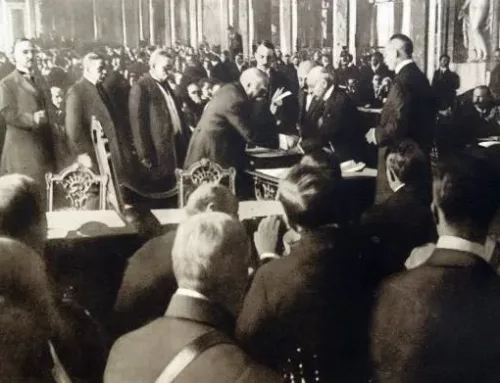American Women in World War I: Marion Randall Parsons: Writer, artist, mountain climber, Red Cross worker
Published: 20 February 2023
via the American Women in World War I web site

Marion Randall Parsons, ca. 1918
San Francisco-born Marian Randall (1878–1953) was the daughter of druggist Charles Wells Randall and his wife, Nancy Garabrant Randall, and had four siblings. An enthusiastic mountain climber, she ascended at least 50 peaks. In 1907, she married Sherwin Williams salesman and fellow mountaineer Edward Taylor Parsons (1861–1914). She befriended Wanda Muir, a daughter of naturalist John Muir (see, for example, this photo of Muir with Parsons and her husband and this letter from Parsons to Muir), and edited Muir’s posthumous Travels in Alaska (1915). Parsons had a long association with the Sierra Club that included service as a board member, secretary, editor of the organization’s bulletin, and director.
In June 1918, Parsons sailed for France and was assigned as director of the Red Cross’ civilian relief in Landes, France. Excerpts from her letters from France appeared in the January 1919 Sierra Club Bulletin (one letter mentions her hope to “sneak down to Lourdes for one look at the Pyrenees,” 461).
La grosse Bertha [a big German gun that was nicknamed Bertha] spoke again after a silence of several weeks. I was sitting in front of the Louvre when the darn thing went off. It sounded mighty close to me, but missed me by about a mile, I afterwards learned. …. We all went around as if she wasn’t barking at all.
I worked at the hospital again yesterday—a terribly hard day. I had to tell one boy that his leg was amputated—he hadn’t known it was gone. He was so brave about it for all he was so terribly weak and sick. Later, when I was giving him some soup, he said, “They seem to take a lot of trouble about caring for you here, even if they know you’re never going to be good for anything again. They seem to try just as hard to make you get well.” I had all I could do to keep from crying. . . . .
[July 21, 1918] One evening … we knew that a train of wounded was coming. It pulled in long after dark, silently as the little French trains always do, and the great darkened sheds that had looked so empty during our long hours of waiting were at once full of people and stir. I wish I could make you see it—the French “Auxiliaries” with their blue veils and white dresses, following closely the uniformed doctors; the rows upon rows of stretchers with their tired, suffering men—a white bandage showing there, there a blood-stained bared arm or foot; the huddled, half-dazed groups of walking cases ranged on benches or floors; the sturdy, busy stretcher-bearers working quickly, quietly, and without the least confusion; and the ambulances burring off through the dark streets with their silent, patient cargoes.
Read the entire article on the American Women in World War I web site here:
External Web Site Notice: This page contains information directly presented from an external source. The terms and conditions of this page may not be the same as those of this website. Click here to read the full disclaimer notice for external web sites. Thank you.
External Web Site Notice: This page contains information directly presented from an external source. The terms and conditions of this page may not be the same as those of this website. Click here to read the full disclaimer notice for external web sites. Thank you.



